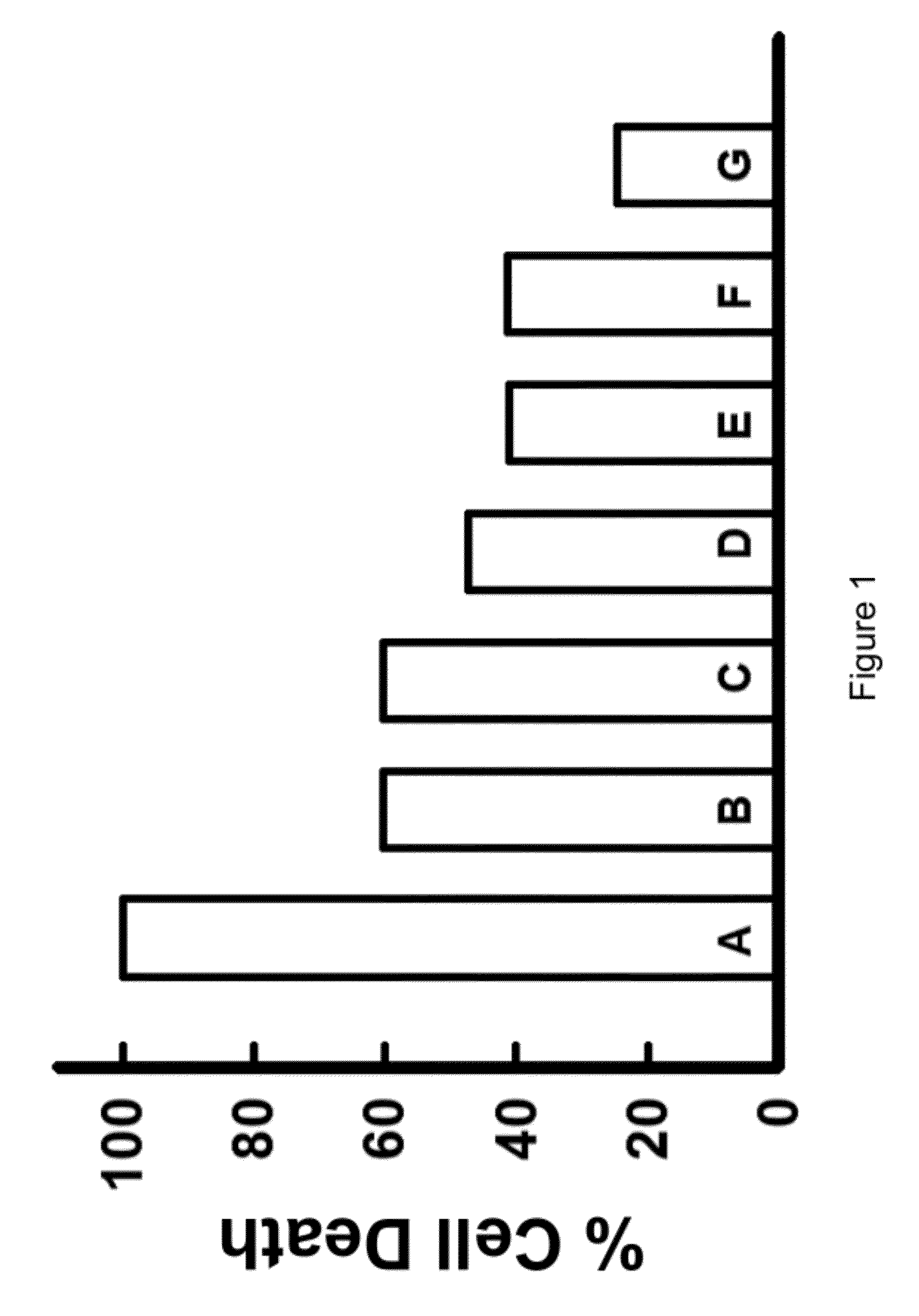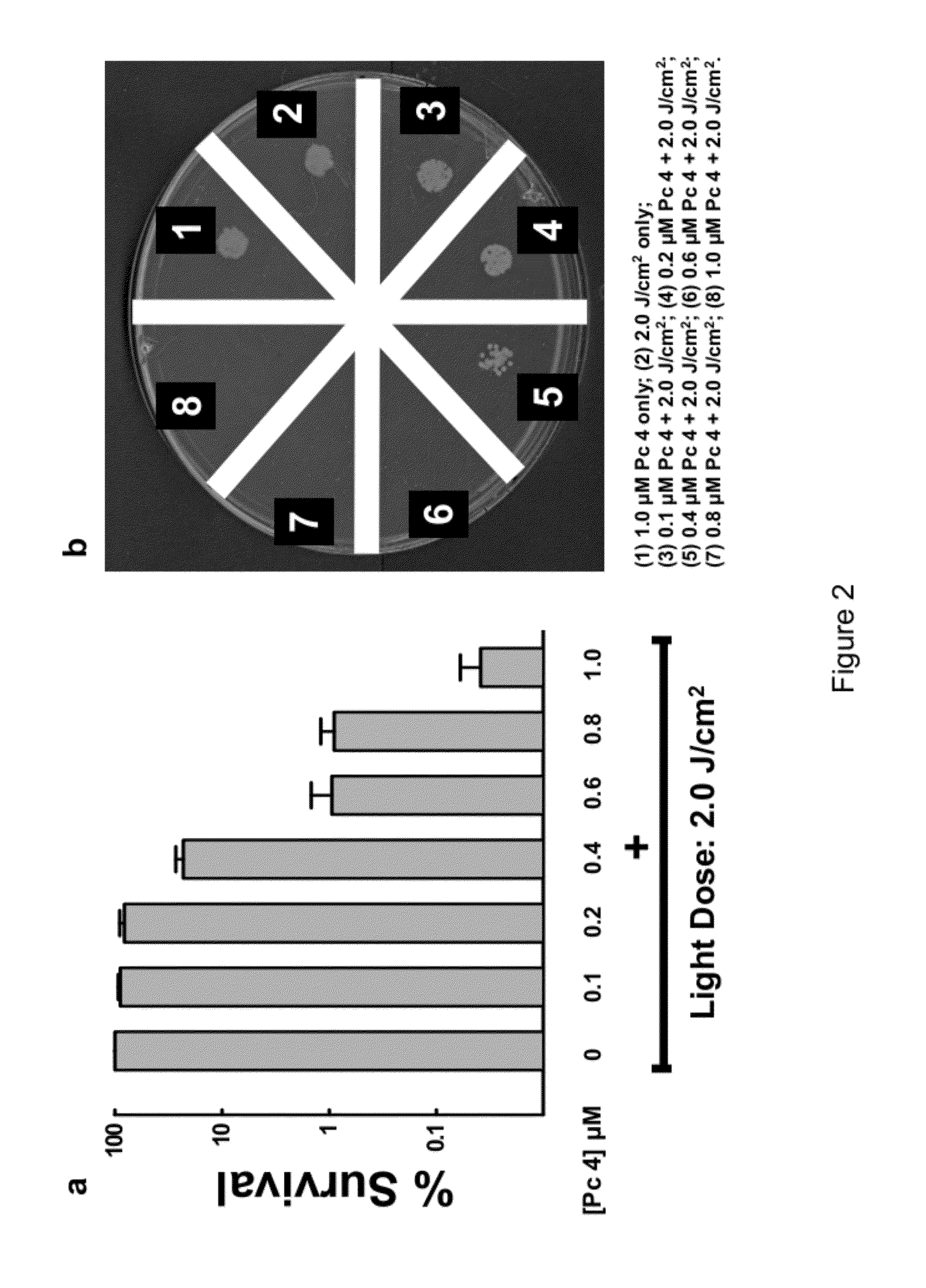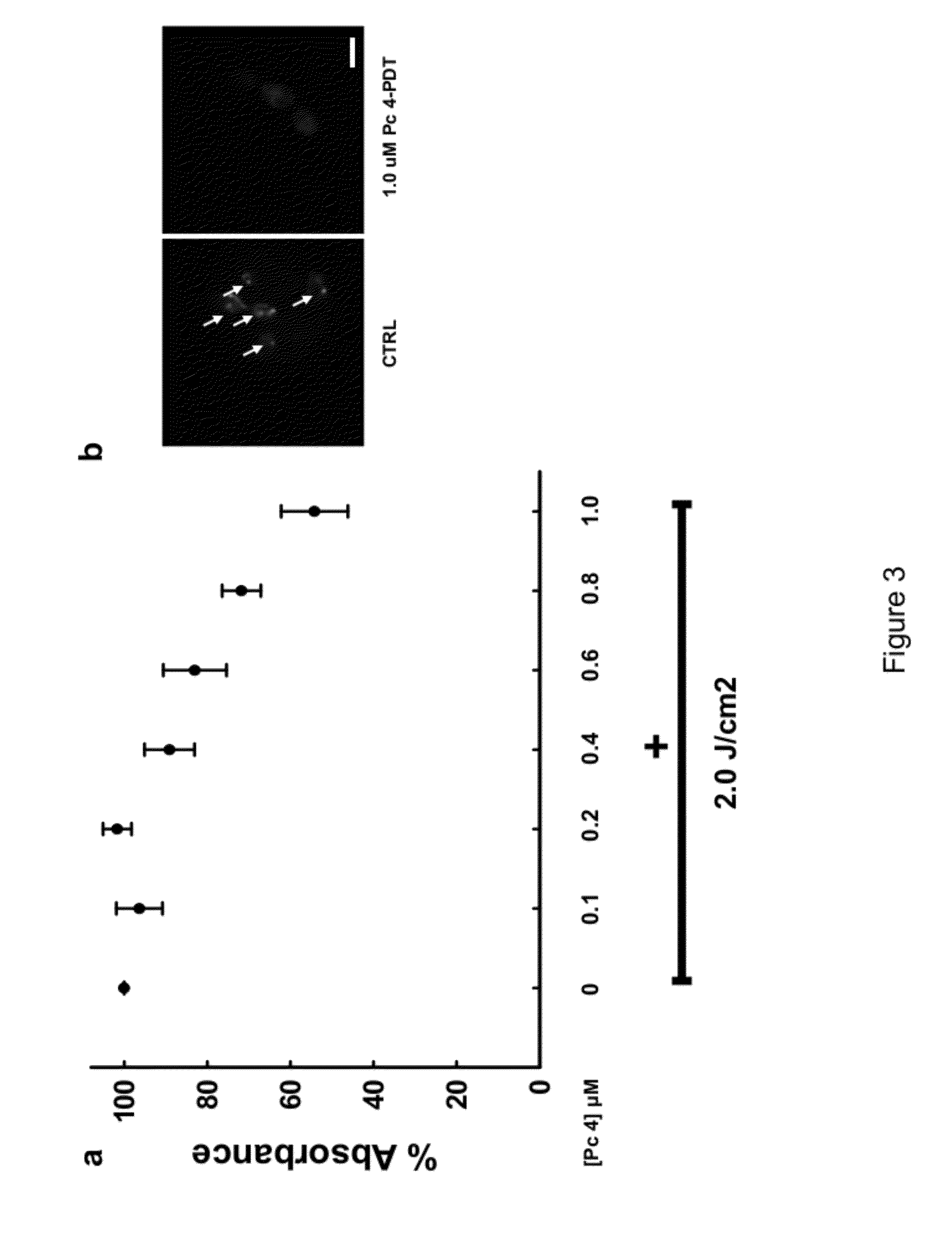Phthalocyanine-based antifungal agents
- Summary
- Abstract
- Description
- Claims
- Application Information
AI Technical Summary
Benefits of technology
Problems solved by technology
Method used
Image
Examples
example 1
Photodynamic Therapy with Pc 4 for Fungal Infections
[0058]The inventors carried out experiments to obtain data on Pc 4 PDT induced cytotoxicity on planktonic C. albicans. In addition, confocal imaging data was obtained demonstrating that Pc 4 is effectively taken up by the C. albicans into cytosolic compartments, but not in the plasma membrane / cell wall or nucleus, similar to the Pc 4 distribution observed in mammalian cells.
Materials and Experimental Design:
[0059]Cell growth conditions: A single colony of C. albicans (SC-5134) strain was obtained by inoculation and incubating with 25 ml in Yeast Nitrogen Base (YNB) medium (Becton Dickinson, New Jersey, USA) supplemented with 50 mmol / L dextrose, anhydrous (Fisher Scientific, Pittsburgh, USA), henceforth referred to as standard growth medium, for at least 5 hours in a shaking incubator at 37° C. These cells would then be used to examine the subcellular localization of Pc 4, cell death and survival assays following Pc 4-PDT treatment,...
example 2
Photodynamic Therapy with Pc 4 Induces Apoptosis of Candida albicans
[0065]The in vitro cytotoxicity and mechanism of PDT, using the photosensitizer Pc 4, was assessed in planktonic C. albicans. Confocal image analysis confirmed that Pc 4 penetrates the C. albicans cell membrane and localizes to cytosolic organelles, including mitochondria. A colony formation assay showed that 1.0 μM Pc 4 followed by light at 2.0 J / cm2 reduced cell survival by 4 logs. XTT (2,3-bis [2-Methoxy-4-nitro-5-sulfophenyl]-2H-tetrazolium-5-carboxyanilide inner salt) assay revealed that Pc 4-PDT impaired fungal metabolic activity, which was confirmed using the FUN-1 (2-chloro-4-[2,3-dihydro-3-methyl-(benzo-1,3-thiazol-2-yl)-methylidene]-1-phenylquinolium iodide)fluorescence probe. Furthermore, changes in the nuclear morphology characteristic of apoptosis were observed which were substantiated by the increased externalization of phosphatidylserine and DNA fragmentation following Pc 4-PDT. These data indicate t...
example 3
Nail Absorption of Topically Applied Pc 4
[0083]Because drug penetration into and through the nail plate is always a challenge in the treatment of onychomycosis, the nail absorption of topically applied Pc 4 was also investigated. Using human nail clippings, it was found that a significant amount of Pc 4 fluorescence can be detected within the nail plate after 1 hour of Pc 4 incubation. Considering that these samples were healthy nails, it appears that diseased / dystrophic nails whose barrier functions have been compromised may even have better Pc 4 absorption. Nonetheless, in the clinical protocol, the inventors specified that Pc 4 will be applied not only on the nail plate but also on the exposed subungual tissue and periungual area. Absorption into the nail matrix through the periungal skin is expected because Pc 4 has long been shown to penetrate through the stratum corneum and epidermis, upon topical application.
PUM
 Login to View More
Login to View More Abstract
Description
Claims
Application Information
 Login to View More
Login to View More - R&D
- Intellectual Property
- Life Sciences
- Materials
- Tech Scout
- Unparalleled Data Quality
- Higher Quality Content
- 60% Fewer Hallucinations
Browse by: Latest US Patents, China's latest patents, Technical Efficacy Thesaurus, Application Domain, Technology Topic, Popular Technical Reports.
© 2025 PatSnap. All rights reserved.Legal|Privacy policy|Modern Slavery Act Transparency Statement|Sitemap|About US| Contact US: help@patsnap.com



